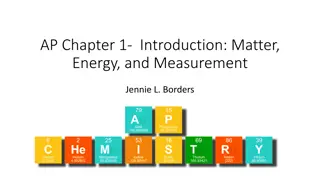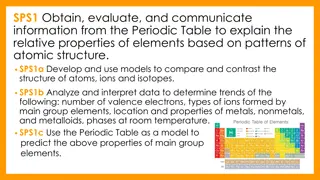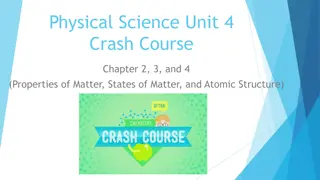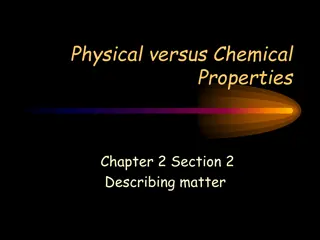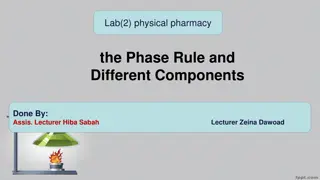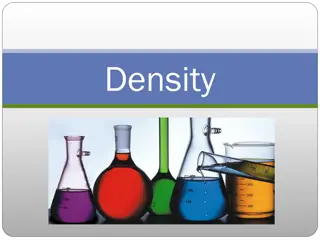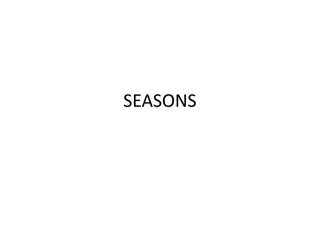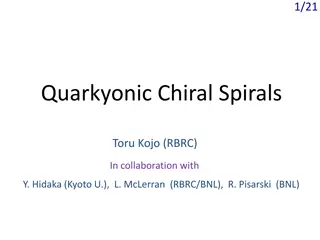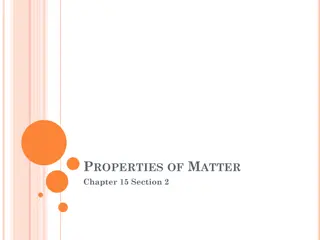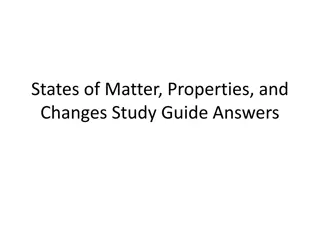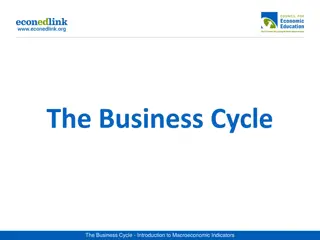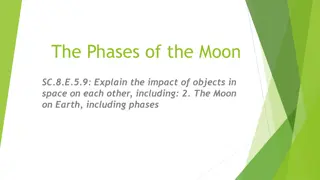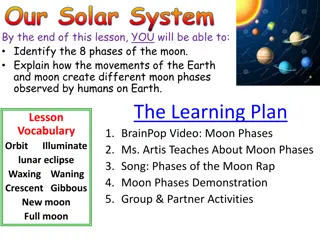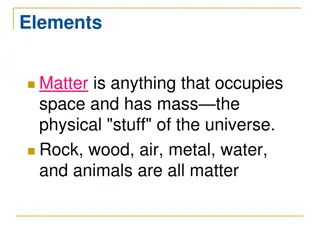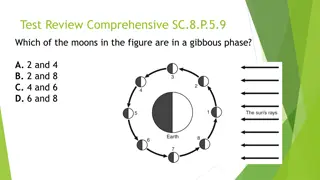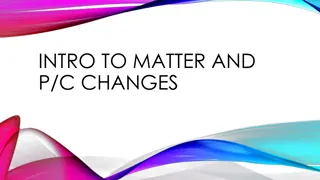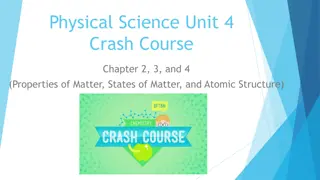Phases of Matter & Physical Properties
Delve into the definition of matter, its states, and physical properties. Explore the concept of pure and mixed matter, along with examples of physical properties. Master essential vocabulary for a solid foundation in the study of matter.
Download Presentation

Please find below an Image/Link to download the presentation.
The content on the website is provided AS IS for your information and personal use only. It may not be sold, licensed, or shared on other websites without obtaining consent from the author.If you encounter any issues during the download, it is possible that the publisher has removed the file from their server.
You are allowed to download the files provided on this website for personal or commercial use, subject to the condition that they are used lawfully. All files are the property of their respective owners.
The content on the website is provided AS IS for your information and personal use only. It may not be sold, licensed, or shared on other websites without obtaining consent from the author.
E N D
Presentation Transcript
Matter Class #1 OB: We will determine what matter is, what are the phases of matter, and describe physical properties of matter. We ll also cover lots of vocabulary that you MUST MASTER ASAP (put it on a leash!) There is NOTHING the matter with you, one silly joke per day is all you get.
1. Define Matter 2. All matter is in one of these 4 states or phases: A. B. C. D.
1. Define Matter ANYTHING THAT TAKES UP SPACE AND HAS MASS. 2. All matter is in one of these 4 states or phases: A. SOLIDS B. LIQUIDS C. GASES D. AQUEOUS
3. The word AQUEOUS means DISSOLVED into WATER (not other liquids, just water) Things that are aqueous are SOLUTION - like salt water, or tea, or acids.
4. Matter can be PURE or MIXED. Pure matter includes the _________________ from the ______________ ________________ and all of the millions of _________________ 5. Mixed Matter is just
4. Matter can be PURE or MIXED. Pure matter includes the ELEMENTS from the PERIODIC TABLE and all of the millions of COMPOUNDS 5. Mixed Matter is just PHYSICAL BLENDS OF PURE SUBSTANCES
6. What are physical properties of matter? Qualities that can be __________ and are ______________
6. What is a physical property of matter? Qualities that can be CONSTANT and are MEASURABLE
7. Examples of physical properties include Density Boiling Point (or condensing point) Freezing point (or melting point) Hardness Magnetic attraction (or not) Solubility in water (aqueous) Solubility in other solvents (oils, ethers, etc.) and many more.
8. Physical Changes are also called __________ changes.
8. Physical Changes are also called PHASE changes.
9. PHYSICAL CHANGES are PHASE CHANGES name all six phase changes SOLID LIQUID GAS
SOLID LIQUID GAS MELTING VAPORIZING
SOLID LIQUID GAS MELTING VAPORIZING FREEZING CONDENSING
SOLID LIQUID GAS MELTING VAPORIZING FREEZING CONDENSING SUBLIMATION DEPOSITION
Get up, its time for a neat demo Iodine, the element, which is a solid at normal temperature, will be made to sublimate into iodine gas, without becoming a liquid first. That means it will Sublimate. Then it will undergo Deposition.
10. Chemical & Physical Changes in matter No new matter forms. No new properties form. Same formulas. Physical Changes A rearrangement of the atoms or particles of the substance Chemical Changes New matter forms. New properties form. Different formulas. 11. Physical changes are just phase changes. Chemical changes are reactions, which make new stuff.
12. What are MIXTURES? Mixtures are The properties of matter in a mixture
12. What are MIXTURES? Mixtures are PHYSICAL BLENDS OF PURE MATTER The properties of matter in a mixture CONSTANT. THEY ARE STILL PRESENT. NO NEW COMPOUNDS ARE FORMED WHEN MAKING A MIXTURE. NO NEW PROPERTIES FORM EITHER.
14. Mixtures are either the same throughout or are randomly mixed together. 15. Mixtures that are mixed the SAME THROUGHOUT are called 16. Mixtures that are mixed DIFFERENTLY THROUGHOUT are called
15. Mixtures that are mixed the SAME THROUGHOUT are called HOMOGENEOUS 16. Mixtures that are mixed DIFFERENTLY THROUGHOUT are called HETEROGENOUS
Examples 17 18
Salty Water Chocolate milk Oil & white vinegar Heterogeneous, will not mix at all Homogeneous stays mixed perfectly Heterogenous, will settle apart soon 19. Salt water is homogeneous it s the same throughout. 20. Chocolate milk is heterogeneous, because the chocolate will settle to the bottom. (It does start mostly homogeneous) 21. Oil and vinegar are heterogeneous; they will not mix.
22. Mixtures can come in ALL PHASES. Examples of mixtures Solution phase examples Contains this Mixed with this Steel Carbon Iron Solids Brass Zinc Copper Wine Ethanol Fruit juice Liquids Vinegar Acetic acid Water Gas Air Oxygen Nitrogen Salty water Table salt Water Aqueous Kool Aid Sugar + Food color Water
Matter Class #2 OB: Matter Vocabulary, Compounds + Elements, the Law of Conservation of Matter
23 MATTER Mixtures (two flavors ) Pure substances all homogeneous
23 MATTER Mixtures (two flavors ) Pure substances all homogeneous Elements examples: Mg, Ca, Fe Compounds examples: H20, CO2, NaCl
23 MATTER Mixtures (two flavors ) Pure substances all homogeneous Homogeneous examples: air, tap water, includes all solutions Elements examples: Mg, Ca, Fe Heterogeneous sugar + salt, sand + water, concrete, soup Compounds examples: H20, CO2, NaCl
The Law of Conservation of Matter 24 Matter cannot be created or destroyed in a chemical reaction, or in a physical change. What is a physical change again?
The Law of Conservation of Matter 24 Matter cannot be created or destroyed in a chemical reaction, or in a physical change. What is a physical change again? A phase change.
Write this word equation on the line to start: Sodium and Chlorine yields Sodium Chloride 25. The sodium + chlorine are called ____________ 26. Sodium Chloride is the __________________ 27. The mass of the the mass of the ____________ _____________ = because all chemical reactions follows the
Write this word equation on the line to start: Sodium and Chlorine yields Sodium Chloride 25. The sodium + chlorine are called REACTANTS 26. Sodium Chloride is the PRODUCT = 27. The mass of the the mass of the
Write this word equation on the line to start: Sodium and Chlorine yields Sodium Chloride 25. The sodium + chlorine are called REACTANTS 26. Sodium Chloride is the PRODUCT = 27. The mass of the the mass of the REACTANTS PRODUCTS because all chemical reactions follows the Law of Conservation of Matter
28. If you completely react 46 grams of sodium with 70 grams of chlorine gas, how many grams of sodium chloride form? _____
28. If you completely react 46 grams of sodium with 70 grams of chlorine gas, how many grams of sodium chloride form? _____ 46 g Na + 70 g Cl 116 grams of NaCl
29. If you completely react 8 g hydrogen with 64 g of oxygen, how many grams of water will form?
29. If you completely react 8 g hydrogen with 64 g of oxygen, how many grams of water will form? 8 g hydrogen + 64 g oxygen 72 g water
30. If 4 g hydrogen reacts with sufficient oxygen and forms 36 grams water, how many grams of oxygen was used up in this reaction?
30. If 4 g hydrogen reacts with sufficient oxygen and forms 36 grams water, how many grams of oxygen was used up in this reaction? 4 g hydrogen + 32 g oxygen 36 grams H2O
31. Fill in the blank with the correct value. ____ g H2 + 28 g N2 34 g NH3
31. Fill in the blank with the correct value. 6 g H2 + 28 g N2 34 g NH3
32. Fill in the blank with the correct value. 223 g Fe + 96 grams O2 ___ g Fe2O3 (rust)
32. Fill in the blanks with the correct values. 223 g Fe + 96 grams O2 319 g Fe2O3 (rust)
How to counting atoms in chemical formulas. 33. Rust has this formula: Fe2O3 It has __ atoms of iron bonded to __ atoms of oxygen for a total of __ atoms in this compound.
How to counting atoms in chemical formulas. 33. Rust has this formula: Fe2O3 It has 2 atoms of iron bonded to 3 atoms of oxygen for a total of 5 atoms in this compound.
How to counting atoms in chemical formulas. 34. Carbon dioxide is CO2 It has __ atom of carbon bonded to __ atoms of oxygen, for a total of __ atoms in this compound.
How to counting atoms in chemical formulas. 34. Carbon dioxide is CO2 It has 1 atom of carbon bonded to 2 atoms of oxygen, for a total of 3 atoms in this compound.
35. How many atoms are in each compounds? H2O ___________ NaCl ___________ CO2 ___________ H3PO4 ___________ H2SO4 ___________ C6H12O6 ___________


